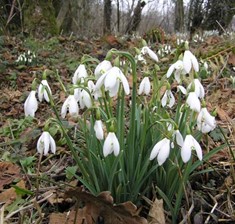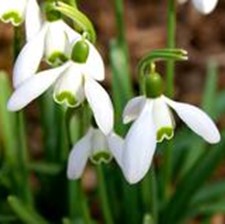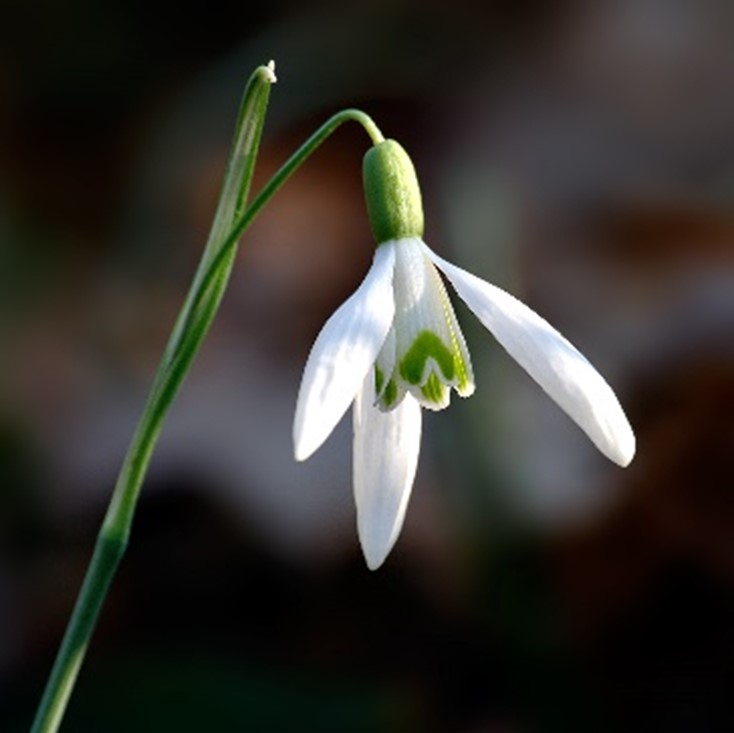Snowdrops
Galanthus nivalis



Characteristics
- Type: Bulb
- Zone: 3 – 7
- Native Range: Europe
- Height: 6 to 9 Inches
- Spread: 4 to 6 Inches
- Bloom Time: February
- Bloom Description: White
- Sun: Full Sun – Part Shade
- Water: Medium
- Maintenance: Low
- Flower: Showy
- Tolerates: Deer, Clay Soil, Black Walnut
Culture
Snowdrops are easily grown in average, medium moisture, well-drained soils in full sun to part shade. Prefers moist, humusy soils in part shade. Snowdrops grow particularly well under deciduous trees where exposure to the sun is full in early spring but gradually changes to part shade as the trees leaf out. Also prefers cool climates, and tends to be somewhat short-lived when grown south of USDA Zone 7. Plant bulbs 2-3” deep and space 2-3” apart in fall in groups of at least 25 bulbs. In optimum growing conditions, this bulb will naturalize well by both self-seeding and bulb offsets to form large colonies. Allow foliage to yellow after bloom before removing it from garden areas. If left alone, foliage disappears by late spring as bulbs go dormant.
Noteworthy Characteristics
Galanthus nivalis, commonly called snowdrop, is a bulbous perennial that is native to Europe and southwestern Asia. It has escaped gardens and naturalized in parts of eastern North America. It is a true harbinger of spring that typically blooms from late February to late March, often poking its head up through snow cover if present. The common name refers to the supposed resemblance of the flowers to drops of snow. Each flower has six tepals (three spreading outer tepals and three shorter inner tepals). Genus name comes from the Greek words gala meaning milk and anthos meaning flower in reference to the color of the flowers. Specific epithet means snowy.
Problems
No serious insect or disease problems. Wear gloves when planting bulbs to avoid possible skin irritation.
Garden Uses
Best massed in sweeping drifts in areas where they can naturalize, such as woodland margins or in lawns under large deciduous trees. Also effective in groupings in rock gardens, border fronts, in front of flowering shrubs or along walks or paths. Mix with other early flowering bulbs such as Eranthis (winter aconite).
Courtesy of Missouri Botanical Society Plant Finder